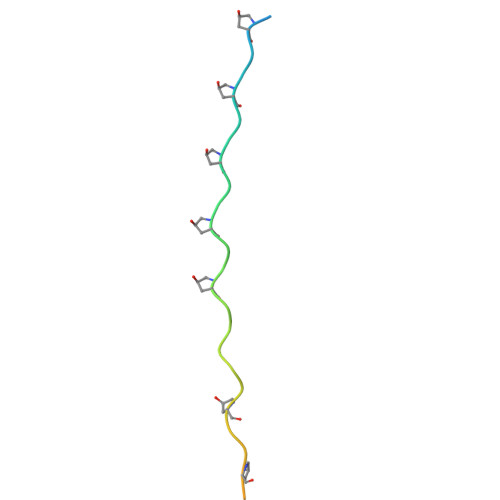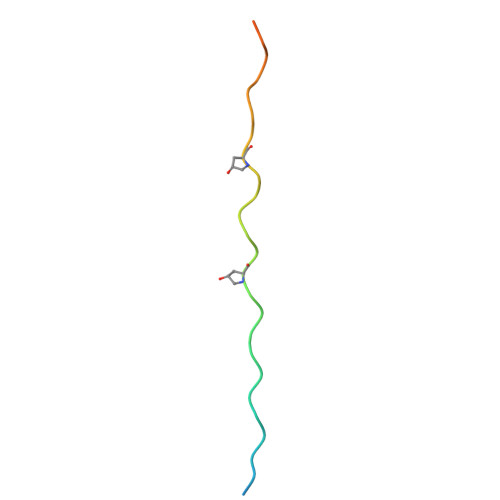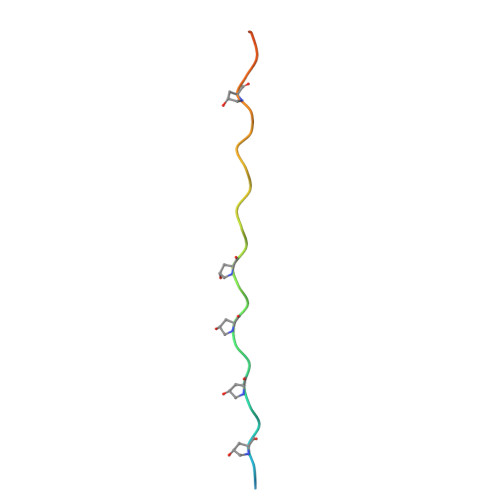A Collagen Triple Helix without the Superhelical Twist.
Kreutzberger, M.A.B., Yu, L.T., Bui, T.H., Hancu, M.C., Purdy, M.D., Osinski, T., Kasson, P.M., Egelman, E.H., Hartgerink, J.D.(2025) ACS Cent Sci 11: 331-345
- PubMed: 40028357
- DOI: https://doi.org/10.1021/acscentsci.5c00018
- Primary Citation of Related Structures:
9C9L, 9C9U - PubMed Abstract:
Collagens are ubiquitous in biology: functioning as the backbone of the extracellular matrix, forming the primary structural components of key immune system complexes, and fulfilling numerous other structural roles in a variety of systems. Despite this, there is limited understanding of how triple helices, the basic collagen structural units, pack into collagenous assemblies. Here we use a peptide self-assembly system to design collagenous assemblies based on the C1q collagen-like region. Using cryo-EM we solved a structure of one assembly to 3.5 Å resolution and built an atomic model. From this, we identify a triple helix conformation with no superhelical twist, starkly in contrast to the canonical right-handed triple helix. This nontwisting region allows for unique hydroxyproline stacking between adjacent triple helices and also results in the formation of an exposed cavity with rings of hydrophobic amino acids packed symmetrically. We find no precedent for such an arrangement of collagen triple helices and designed assemblies with substituted amino acids in various locations to probe key stabilizing amino acid interactions in the complex. The stability of these altered complexes behaves as predicted by our atomic model. Our findings, combined with the extremely limited experimental structural data on triple helix packing in the literature, suggest that collagen and collagen-like assemblies may adopt a far more varied conformational landscape than previously appreciated. We hypothesize that this is particularly likely in packed assemblies of triple helices, adjacent to the termini of these helices and at discontinuities in the required Xaa-Yaa-Gly repeating primary sequence, a discontinuity found in the majority of this class of proteins and in many collagen-associated diseases.
- Department of Biochemistry and Molecular Genetics, University of Virginia School of Medicine, Charlottesville, Virginia 22903, United States.
Organizational Affiliation:



















